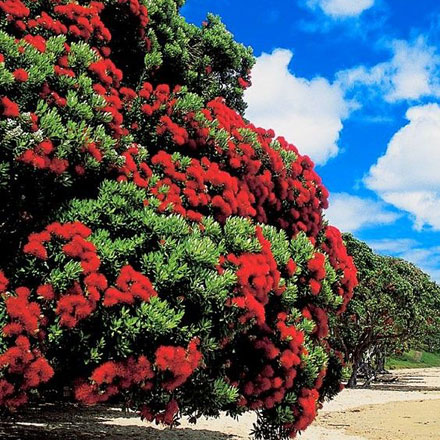
When it comes to Christmas tree species, New Zealand wins according to National Geographic. Source: National Geographic
There’s really no such thing as a ‘Christmas tree’—around the world people have grown to prefer different conifers for their Christmas centre piece needs, depending on what the environment has on offer.
In Europe, where the tradition started, the quintessential Christmas tree is the Norway spruce (Picea abies), a fast growing conifer species native to the Eastern and Northern parts of the continent.
Another popular option is the attractive Nordmann fir (Abies nordmanniana) with thicker foliage and needles that don’t shed as quickly once the tree has dried out.
In North America, a popular Christmas tree species is the native Douglas fir (Pseudotsuga menziesii) a misleadingly named species that doesn’t actually belong to the fir genus, but this biological detail is pretty much irrelevant when it comes to its decorative powers.
Australians and New Zealanders have ended up largely favouring the imported Monterey pine (Pinus radiata), a species native to the Central Coast of California, but now an extremely common forest tree in both countries, sometimes to the detriment of local native ecosystems.
In New Zealand there’s also a native tree associated with festive cheer—the pohutukawa tree (Metrosideros excelsa) is often referred to as ‘New Zealand Christmas tree’, since it blossoms with stunning red flowers right around Christmas season, no decorations needed.







